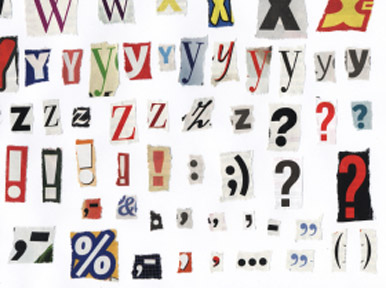東區學英語 | 菁英東區校 強化你的英語標點符號能力


重要的是要知道當你寫英文標點符號的規則,使用了錯誤的標點符號,可能會導致誤解。
使用正確的標點符號會使人留下深刻的印象,如當你申請一份新的工作,
或者當你正在開發新的客戶,這些時候顯得更為重要。
這裡是一個在英語中更常見的標點符號使用的規則的指南。

When to use commas in English
1. To separate items in a list
We need coffee, tea, sugar and milk.
British English writers do not normally put a comma before "and", although in American
English, a comma can be used.
"We need coffee, tea, sugar, and milk."
2. To separate clauses which are related in meaning
Do you know the answer, or should I ask Tony?
Where the clauses are short, commas are not used:
"I was tired so I went home."
3. After introductory phrases
Unfortunately, I cannot send you the information.
4. Before and after a word or phrase that interrupts the main clause
Some children,if they are gifted, attend special schools.
5. Before and after non-defining clauses
The factory workers, who were in a meeting, decided to accept the pay offer.
= All the factory workers were in a meeting.
Compare with a defining clause (which restricts the noun).
The factory workers who were in a meeting decided to accept the pay offer.
= Only the factory workers who were in a meeting decided to accept the offer: those workers who were not in the meeting didn't decide to accept the offer.
6. To show millions, thousands and hundreds
When to use a full stop
(or "period" in American English)
1. At the end of the sentence
Thank you for your letter.
2. After initials in American English
Mr. G. Hoover.
3. As a decimal point
When to use a colon
1. To introduce a list
You will need to bring the following: a waterproof jacket, a change of clothes, a battery-operated torch and some matches.
2. To introduce explanations
There is one thing to remember: the nights can get cold, so bring a warm jacket.
3. To write the time
The 10:40 train to London is late.
4. Between the title and subtitle of a book
Shakespeare: The Complete Works
When to use a semi-colon in English
Semi-colons show a pause which is longer than a comma, but not as long as a full stop. Short clauses which are related in meaning can be separated by a comma. However, if the clauses are longer, you will probably need a semi-colon:
We'll need to hold some meetings abroad with our suppliers; please could you check your availability in April.
1. To separate long items in a list
Our writing course includes several components: correspondence, including
letters and emails; style and vocabulary choice; punctuation; layout and planning.
2. To give balance to sentences, or to link parallel sentences
We went out for the day; they stayed in.
When to use an apostrophe in English
1. With an s to show possession
The company's profits.
The 's comes after singular nouns and after irregular plural nouns (those which do not end in s).
The company's staff, the children's shoes.
But the apostrophe follows the swhen the noun is plural and regular.
Compare:
The boy's school (school of one boy) and the boys' school (school of many boys.)
With nouns which end in y in the singular, but end in ies in the plural (like company) the apostrophe follows the s when it is plural.
The company's profits (profits of one company) and the companies' profits (profits of more than one company.)
With hyphenated nouns, the 's comes at the end of the word.
2. To show abbreviation
I don't like smoking. (= do not)
3. In time references
In two weeks' time.
Be careful!
1. Apostrophes are not used for possessive pronouns.
Whose is this pen? (Not "Who's this pen" as "who's" = who is.
That pen is hers. (Not "That pen is her's.")
Its also exists as a possessive pronoun:
Its market has grown. (The market of the company).
2. Apostrophes are not used to make a plural of nouns that end in a vowel.
For example, "two memos" (not "two memo's").

資料來源:
http://www.english-at-home.com/business/improving-your-punctuation/
菁英教育|上海托福培训|上海雅思培训|遊學|托福|多益|雅思|全民英檢|TOEFL|TOEIC|IELTS|GEPT|SAT|上海SAT培训|上海SSAT培训|日本打工度假|日文補習班|菁英排課系統






 留言列表
留言列表
 全民英檢GEPT
全民英檢GEPT